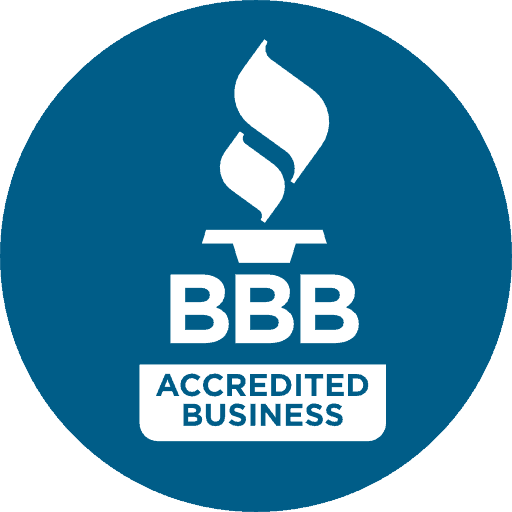Strategies that elevate your small business are often within reach, yet many overlook them. As you explore innovative marketing techniques, consider leveraging digital platforms, social media engagement, and personalized customer experiences to enhance your brand visibility. Implementing data-driven decisions allows you to refine your marketing efforts based on customer insights, while fostering loyalty through effective communication. By adopting these pro-level approaches, you not only position your business for success but also engage your target audience more effectively.
Understanding Your Target Market
Before launching your marketing campaigns, it’s necessary to gain a deep understanding of your target market. This foundational step will help you tailor your strategies to meet the specific needs and preferences of your intended audience. A well-defined target market not only improves your marketing efficiency but also enhances your ability to build meaningful connections with your customers. By understanding who your customers are, what they value, and how they make purchasing decisions, you can develop more effective messaging, product offerings, and marketing channels.
Defining Buyer Personas
About defining buyer personas, you should consider them as semi-fictional representations of your ideal customers. These personas are built based on your research and real data about your existing customers. To create effective buyer personas, you can start by gathering information related to demographics, interests, challenges, and purchasing behaviors. Doing this will not only help you visualize your target audience but also enable you to anticipate their needs and tailor your marketing efforts accordingly. The more detailed you are in crafting these personas, the more relevant your marketing strategies will be.
Market Research Techniques
Your marketing strategies must be informed by effective market research techniques, which are pivotal in understanding your audience. Employ methods such as surveys, interviews, and focus groups to gather valuable insights that can guide your approach. Don’t overlook the importance of analyzing competitor strategies and leveraging social media analytics to gain a broader perspective on market trends. Each technique you employ will equip you with the information necessary to make informed decisions.
The use of these techniques not only provides valuable data but also helps you identify emerging trends and customer sentiments. You can refine your marketing strategy based on feedback and patterns observed during your research, allowing you to pivot your approach if necessary. By regularly conducting market research, you will maintain a strong connection with your customer base and position your small business for growth and success.
Crafting a Unique Value Proposition
It is imperative for small businesses to establish a strong and compelling unique value proposition (UVP) that resonates with their target audience. Your UVP should clarify what sets your business apart from competitors and why customers should choose your product or service. To achieve this, you need to deeply understand your offerings and how they fulfill the specific needs and desires of your customers. A well-crafted UVP not only enhances your brand’s identity but also provides a clear direction for your marketing strategies.
Identifying Core Strengths
Among the first steps to developing an effective UVP is identifying your core strengths. This entails evaluating what your business does best, whether it’s exceptional customer service, innovative products, or unique expertise in your industry. By recognizing these primary strengths, you can articulate the specific benefits your customers will experience, setting the stage for a compelling message that highlights your distinctive qualities.
Differentiation in a Competitive Landscape
On the other hand, differentiating your business in a crowded marketplace requires a keen analysis of your competitors and their offerings. Conduct thorough research to understand what they provide and identify gaps that your business can fill. By pinpointing areas where you can excel or offer more value—be it through superior quality, innovative features, or unbeatable prices—you position your business as the go-to option in your niche.
Another effective approach to ensuring your differentiation stands out is by emphasizing the authenticity of your brand. Customers today are increasingly drawn to businesses that share their values and demonstrate a genuine commitment to social and environmental responsibility. Highlighting your unique journey, community involvement, or sustainable practices can elevate your brand appeal, creating an emotional connection that distinguishes you from the competition. Additionally, using customer testimonials or case studies can further validate your claims and strengthen your positioning in the minds of potential buyers.
Leveraging Digital Marketing Channels
Clearly, the landscape of marketing has shifted dramatically with the advent of digital platforms. For small businesses, leveraging digital marketing channels is no longer optional; it is a necessity. Utilizing a variety of channels such as social media, email marketing, and search engine optimization can help you reach a broader audience, build brand awareness, and ultimately drive sales. The tools available today allow small businesses to compete effectively with larger firms, making it easier to engage with customers in real-time and tailor strategies to meet their unique needs.
Social Media Strategies
The integration of social media into your marketing strategy can yield remarkable results. Building an authentic presence on platforms like Facebook, Instagram, and LinkedIn allows you to connect directly with your target audience, promoting engagement and fostering brand loyalty. By creating engaging content, whether it be informative posts, videos, or interactive polls, you can effectively draw attention to your brand. Additionally, consider investing in targeted ads to reach niche audiences that are likely to convert.
Email Marketing Best Practices
An effective email marketing strategy can be a game changer for small businesses looking to nurture leads and maintain relationships with customers. It’s vital to build a targeted email list comprised of interested individuals rather than generic contacts. Your email content should offer value, whether that’s exclusive promotions, helpful tips, or company updates. Segmenting your audience can also help you tailor messages for different groups, increasing the likelihood of engagement.
Marketing strategies in email should focus on personalization and relevance. Utilize subject lines that grab attention, make your emails visually appealing, and ensure your messages are concise and to the point. Don’t underestimate the significance of clear call-to-actions, guiding your audience on what to do next. Additionally, maintaining compliance with regulations, such as opting-out options, protects your reputation and builds trust with your subscribers. Following these best practices will not only enhance your email marketing effectiveness but also foster a loyal customer base.
Building an Effective Brand Presence
For small businesses, establishing a strong brand presence can set you apart in a competitive market. Your brand isn’t just your logo or name; it’s the overall perception that your customers have of you. When done correctly, effective branding communicates your values, mission, and how you want to be seen in the eyes of your audience. A coherent brand presence creates recognition, fosters trust, and encourages customer loyalty, which are vital for your long-term success.
Consistency in Branding
Effective branding relies heavily on consistency. You should ensure that your messaging, visual elements, and overall tone align across all platforms, whether it’s on your website, social media, or print materials. Inconsistency can confuse your audience and may lead them to question your credibility. By sticking to a consistent brand style, you reinforce your identity, making it easier for customers to connect with you emotionally and intellectually.
Storytelling for Engagement
One of the most powerful tools in your marketing arsenal is storytelling. Your brand story allows customers to see the human element behind your business, which can significantly enhance engagement. This narrative can outline your journey, the challenges you’ve faced, and the core values that guide you. The stories you tell can transform your brand from a faceless entity into a relatable companion that resonates with your target audience, fostering a deeper connection.
Consistency in your storytelling is equally important. Ensure that every facet of your narrative aligns with your brand’s core values and messaging. When customers can clearly understand your story and see how it relates to their own experiences, they are more likely to engage and invest in your brand. Highlighting struggles, solutions, and successes in a way that embodies your brand’s mission can make your narrative both authentic and memorable.

Measuring Marketing Performance
Not knowing how to effectively measure your marketing performance can lead to wasted resources and missed opportunities. It’s vital to establish clear metrics that reflect the effectiveness of your campaigns. By implementing targeted strategies that focus on performance measurement, you can ensure that every marketing dollar you spend yields tangible results. You should regularly review your strategies to adapt your approach and improve your overall marketing effectiveness.
Key Performance Indicators (KPIs)
The first step in measuring your marketing performance is to define Key Performance Indicators (KPIs). These are measurable values that demonstrate how effectively you are achieving your marketing objectives. Some common KPIs include conversion rates, customer acquisition costs, and return on investment (ROI). Tracking these metrics allows you to assess which strategies are working and which need adjustment. Additionally, different business goals may require different KPIs, so it’s important to select indicators that accurately reflect your unique situation.
Tools for Data Analysis
Between the myriad of tools available today, you have the ability to harness the power of data to drive your marketing decisions. Platforms like Google Analytics, HubSpot, and SEMrush allow you to gather and analyze relevant data in real-time. By leveraging these tools, you can track user engagement, visitor behavior, and campaign performance, enabling you to make informed decisions about your marketing strategies. Utilizing these analytics will not only help you identify trends but also optimize your existing marketing efforts for maximum impact.
Plus, these tools often come with functionalities that offer comprehensive reporting and visualization. This enables you to present data in a way that’s easy for you and your team to interpret. Effective data analysis features allow you to segment your audience and measure the success of individual campaigns. Using these insights, you can refine your marketing tactics, ensuring that you target the right customers at the right time, ultimately enhancing your overall marketing strategy.
Adapting to Market Trends
All businesses, regardless of their size, must adapt to ever-changing market trends to thrive. This means staying alert and responsive to shifts in consumer preferences, technology, and industry standards. Implementing 14 Small Business Marketing Strategies can help you identify emerging trends and navigate them effectively. By being proactive rather than reactive, you position your business to not only survive but also to capitalize on trends that align with your brand identity and values.
Staying Ahead of Industry Changes
Along with keeping your finger on the pulse of market trends, it’s imperative to monitor changes within your industry. Engaging with industry publications, attending conferences, and participating in professional networks can help you gain insights into the latest developments. This approach enables you to stay ahead of the competition by adopting innovative practices and technologies before they become mainstream. Taking initiative in adapting to changes can set your business apart and strengthen your market position.
Continuous Improvement Strategies
Between identifying trends and implementing changes, establishing a culture of continuous improvement is crucial for long-term success. This process involves evaluating your business practices regularly and seeking opportunities to optimize them, whether it’s through employee training, customer feedback, or technology upgrades. A commitment to continuous improvement not only enhances your operational efficiency but also fosters a resilient business model that can withstand fluctuations in the marketplace.
The goal of continuous improvement is to maintain a dynamic business environment where you actively seek advancements and efficiencies. Regularly solicit feedback from your customers and employees, as their insights can lead to significant improvements in your offerings. Additionally, reinvesting in your workforce through training can yield positive results, as skilled employees are key to innovating and adapting processes effectively. Building a culture focused on adaptability and growth will empower your business to embrace new opportunities while mitigating risks associated with market changes.
Conclusion
Conclusively, implementing pro-level marketing strategies can elevate your small business to new heights. By focusing on understanding your target audience, leveraging digital platforms, and building a strong brand presence, you can optimize your outreach and engagement efforts. It’s important to utilize data-driven insights and analytics to assess what works best for your particular market, allowing you to refine your approach continuously. Engaging in community-driven initiatives and utilizing social media can significantly enhance your visibility, driving customer loyalty and growth.
As you explore these strategies, ensure you remain adaptable and open to experimentation. The landscape of marketing is always evolving, and staying informed will help you capitalize on emerging trends and technologies. Investing in your marketing efforts is not just about immediate returns; it’s about building a sustainable foundation for future success. Embrace these pro-level strategies wholeheartedly to maximize your potential and secure a prosperous future for your small business.



















